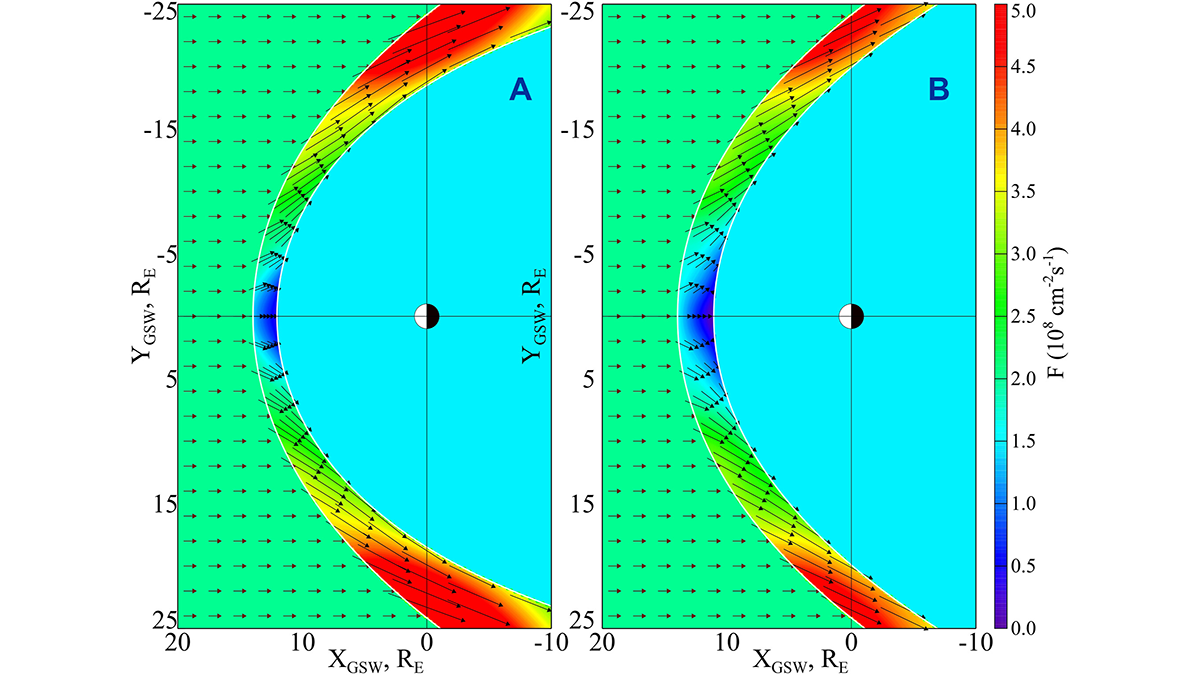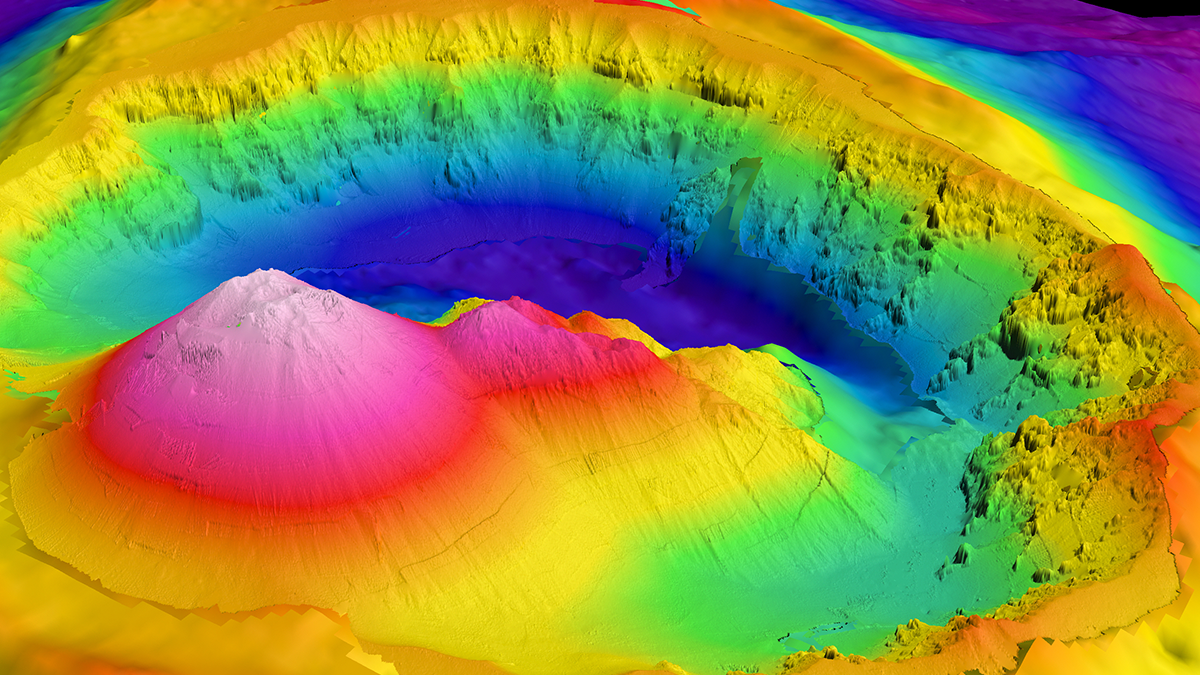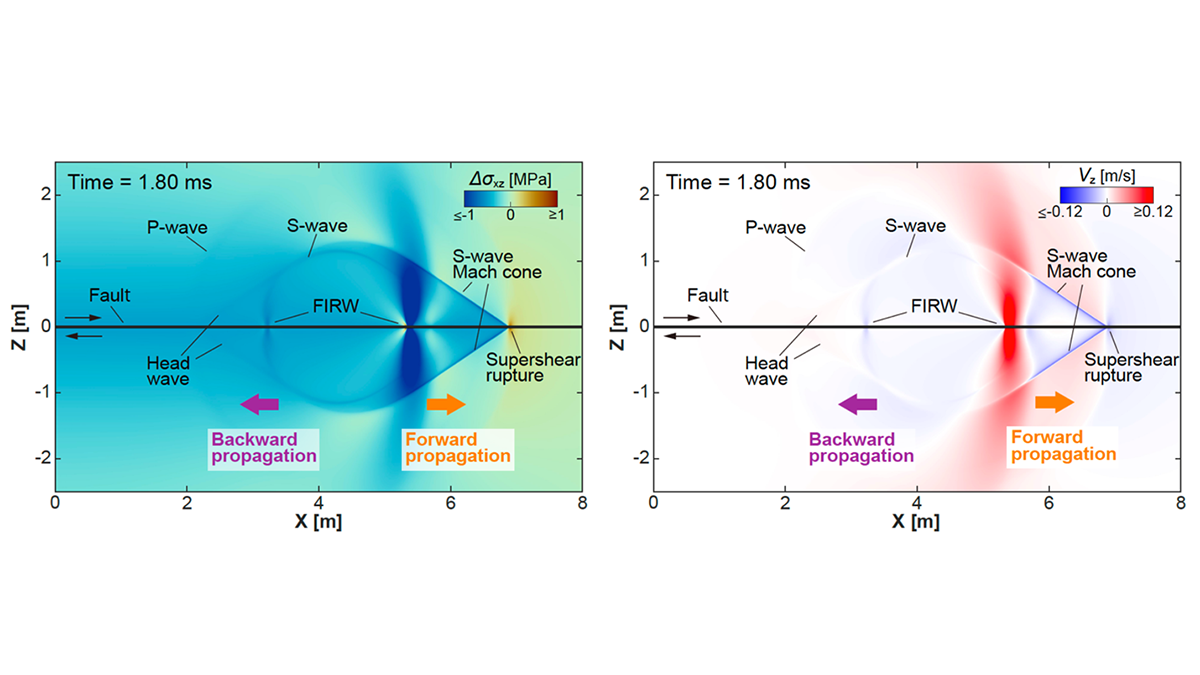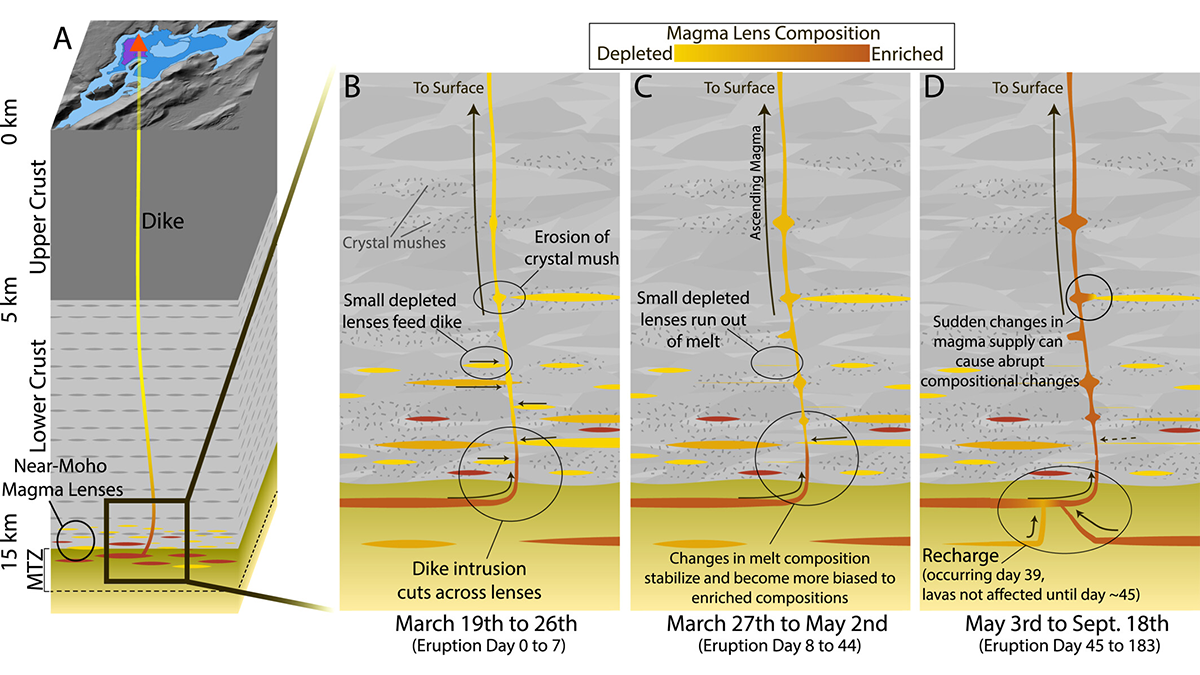Cyclic changes of fluid pressure in fault zones can induce slow-slip events that advance in the direction of fluid flow, even when the faults are stable.
Editors’ Highlights
How Southern Ocean Currents Modulate Global Biogeochemical Cycles
Swirling currents called mesoscale eddies occupy about 22% of the ice-free Southern Ocean. Using data from drifting floats and satellites, scientists report the impact these eddies have on biogeochemical cycles.
Mars and Earth: A Tale of Two Energy Budgets
The first view of Mars’ latitudinal radiant energy budget reveals stark contrast with Earth’s energy distribution, offering new insights into each planet’s unique energy dynamics.
Fast Adept Sea Ice Forecasts
Artificial intelligence facilitates an efficient, skillful surrogate of a coupled Arctic sea ice prediction model using generative diffusion.
Wave-Modulated Electron Loss Affects GPS Location Determination
Earth’s magnetosphere controls ionospheric total electron content modulation via plasma wave-induced electron loss impacting GPS spatial location determination.
New Empirical Model of the Flux in the Magnetosheath
A new study presents a model that reconstructs the plasma flux in the Earth’s magnetosheath.
Imaging Magma from Afar
Reservoirs of magma and fluids in the crust create gravity anomalies detectable by altimetry, which can help find submarine volcanoes and provide key insights into their depth, shape and volume.
Rewinding the Fault: Stress Perturbations Promote Back-Propagating Ruptures
Free surface reflection and fault geometric asperities can excite backward propagation in the form of an interface wave or high-order re-rupture.
Magma Diversity in Iceland
Iceland’s recent basalt eruptions originated at the crust-mantle boundary and show chemical variability over remarkably short timescales of weeks, suggesting exchanges between diverse magma sources.
Past Fracture Damage Can Inhibit Earthquake Slip
Around the surface rupture of the 2008 Wenchuan earthquake, a new study documents an anti-correlation between pre-existing fracture damage and earthquake slip – implying that damage inhibited slip.










